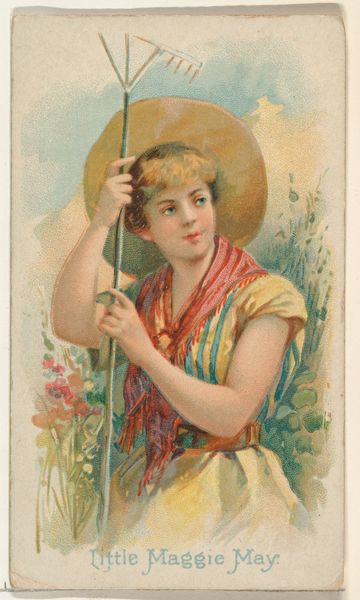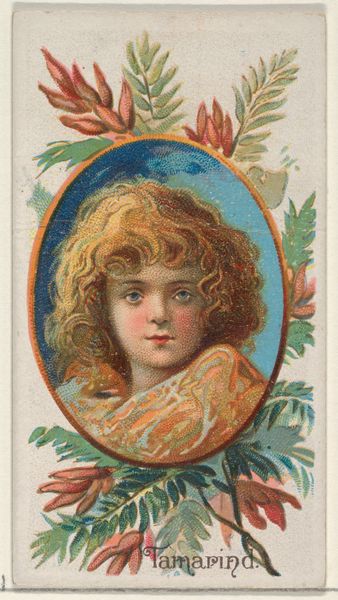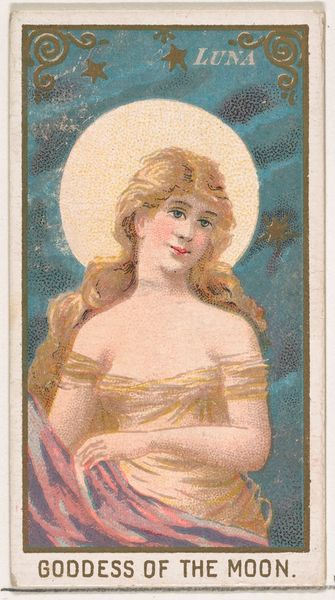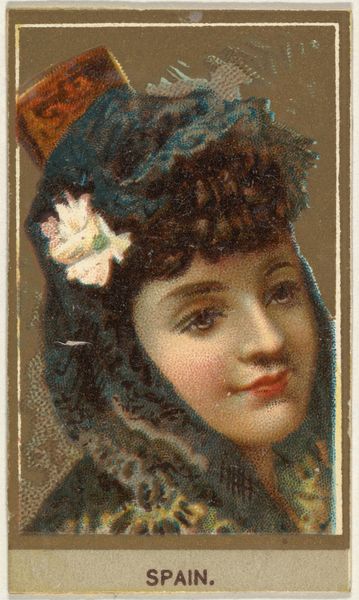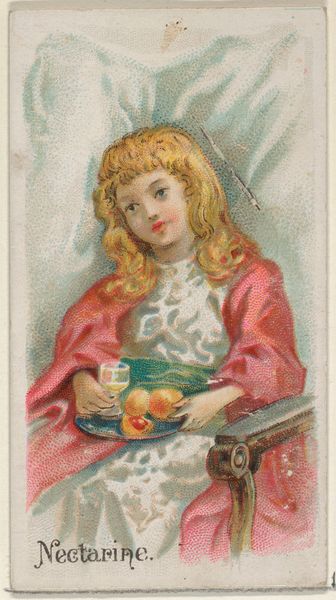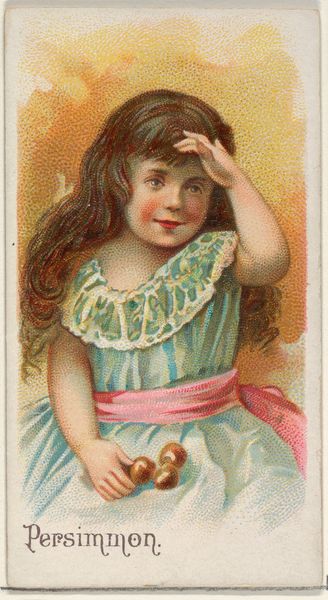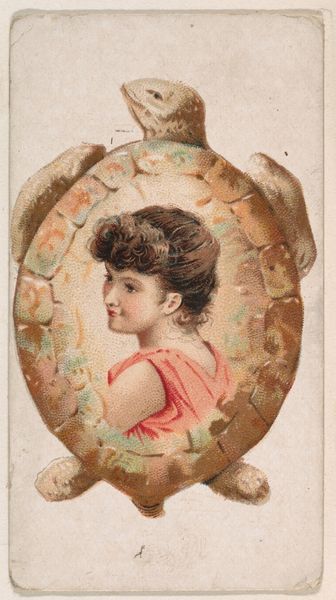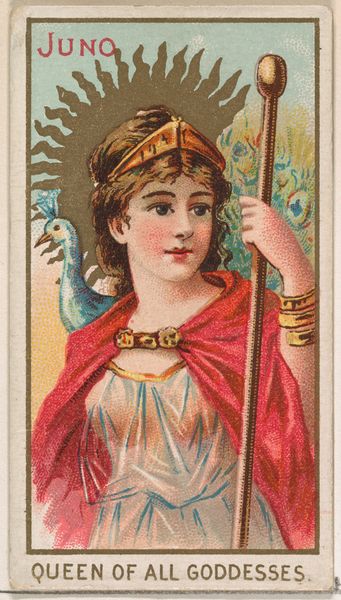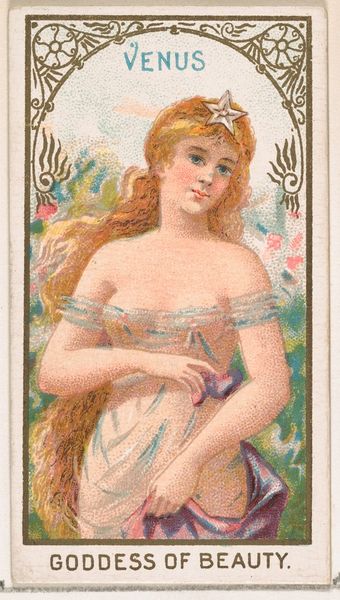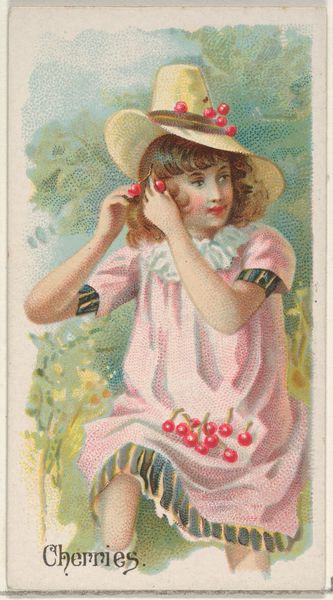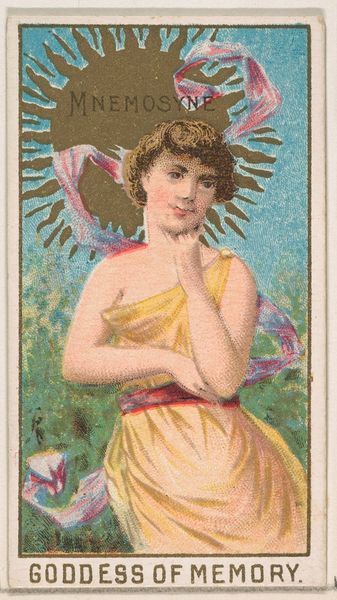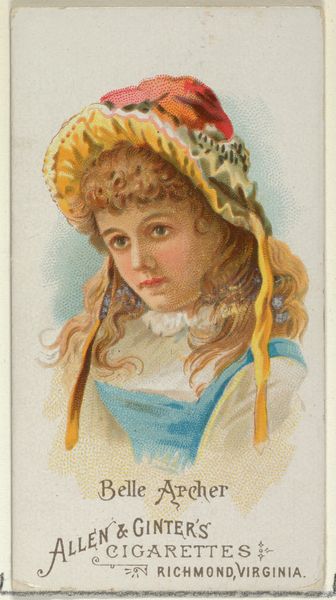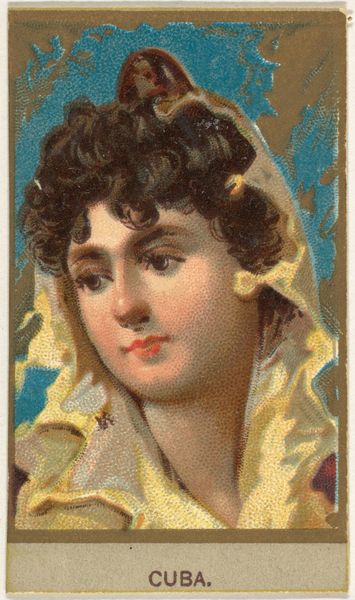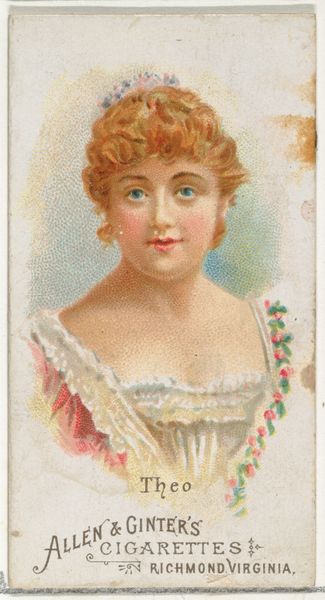
Clara C., from World's Beauties, Series 2 (N27) for Allen & Ginter Cigarettes 1888
0:00
0:00
drawing, coloured-pencil, print
#
drawing
#
coloured-pencil
# print
#
impressionism
#
caricature
#
caricature
#
coloured pencil
#
portrait art
Dimensions: Sheet: 2 3/4 x 1 1/2 in. (7 x 3.8 cm)
Copyright: Public Domain
Editor: Here we have "Clara C., from World's Beauties, Series 2 (N27) for Allen & Ginter Cigarettes," a print and colored-pencil drawing dating to 1888. It's such a small image! Almost feels like a precious memento. How do we begin to really understand this work beyond its surface charm? Curator: Let's think about its origins. This isn't fine art in the traditional sense, it's a collectible cigarette card. What does it mean that art, portraiture specifically, becomes a tool of consumer culture, an element in the process of selling tobacco? Editor: So, less about inherent artistic merit, and more about its function as a commercial object? Curator: Precisely. Consider the materials. Cheap paper, mass-produced prints, color pencils...These materials and the means of production are inherently linked to accessibility and distribution. Who was buying these cigarettes? Who was the target audience being presented with these "World's Beauties?" Editor: Working class maybe? Easy to access with daily purchases... so, the art becomes democratized? Curator: In a sense, yes. But consider who profits. Democratization perhaps with a touch of exploitation? The consumer now carries these “beauties” with him…a pocket-sized form of ownership, creating and reinforcing a particular social dynamic. The mass production process turns ‘beauty’ into something easily consumed and easily discarded. Editor: That makes so much sense. It shifts my perception completely. I initially saw a pretty picture; now I see a manufactured ideal tied to industry and social structures. Curator: And seeing that connection is key. This isn't just art, it's a historical artifact that reflects the values and material conditions of its time. Editor: Right, considering its role within a larger economic and social framework truly changes how we see art, doesn't it? Curator: Indeed! Thinking about production and consumption changes everything.
Comments
No comments
Be the first to comment and join the conversation on the ultimate creative platform.
